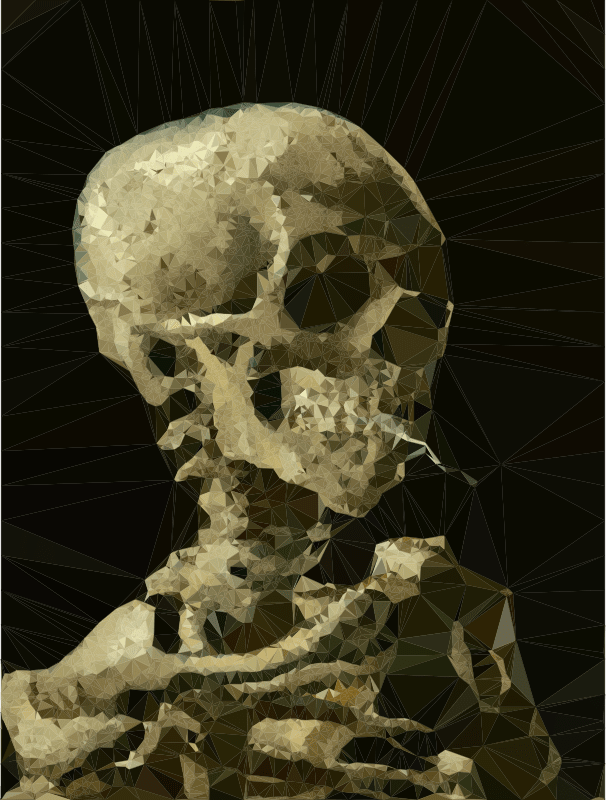The Curious Case of the Smoking Skeleton
The image of a skeleton clutching a cigarette is a striking one. It’s a juxtaposition of mortality and fleeting pleasure, a stark reminder of our own impermanence. But where did this visual trope originate, and what meanings does it carry across different cultural contexts? This exploration delves into the curious world of the smoking skeleton, examining its symbolism and its enduring presence in art and popular culture.
The smoking skeleton isn't just a random pairing. It's a carefully constructed visual metaphor that speaks to deeper anxieties about life, death, and the human condition. It's a symbol rich with interpretations, prompting reflection on the brevity of life and the ephemeral nature of pleasure. Its prevalence in various forms suggests a universal fascination with the theme of mortality.
Tracing the precise origins of the skeletal smoker is difficult. Similar imagery, featuring death personified with indulgences like wine or feasts, appears throughout art history, dating back to the medieval period. These depictions served as moral reminders of the fleeting nature of earthly pleasures. The modern iteration, with the specific inclusion of a cigarette, likely emerged in the 20th century with the rise of cigarette advertising and the growing awareness of its health risks.
The cigarette in the skeleton's bony hand adds another layer of complexity to the image. It represents a modern vice, a knowingly self-destructive act that further underscores the theme of mortality. The skeleton smoker embodies the idea of living on borrowed time, indulging in fleeting pleasures despite the inevitable end. It’s a potent symbol of the tension between our desire for instant gratification and our awareness of our own mortality.
This macabre figure isn't confined to a single medium. It appears in various forms, from vintage advertisements and tattoo art to contemporary graphic novels and music album covers. Its adaptability speaks to its enduring appeal as a symbol of rebellion, a memento mori, or even a dark comedic element. The image continues to resonate with audiences, provoking thought and sparking conversations about our relationship with death and the choices we make in life.
The bony figure with a cigarette has been used to represent various concepts related to death, decay, and the fleeting nature of life. The image often appears in contexts where themes of risk-taking, rebellion, and the acceptance of mortality are explored.
The "skeleton smoking a cigarette" motif can be viewed as a warning against the dangers of smoking, a reminder of the inevitable end, or even a darkly humorous commentary on the human condition. Its interpretation is often left to the viewer.
There are diverse interpretations. Some see the skeleton with a cigarette as a memento mori, a reminder of death that encourages us to live life to the fullest. Others see it as a cautionary tale about the dangers of addiction and the ultimate price we pay for our vices. Still others find humor in the image, a darkly comedic take on our own mortality.
Advantages and Disadvantages of Using the Skeleton with a Cigarette Image
| Advantages | Disadvantages |
|---|---|
| Visually striking and memorable | Can be perceived as morbid or offensive |
| Rich in symbolism and open to interpretation | May trivialize the serious issue of smoking and its health risks |
Frequently Asked Questions about the Symbolism of the Smoking Skeleton:
1. What does the skeleton with a cigarette represent? It can symbolize mortality, the fleeting nature of pleasure, rebellion, or a reminder of the consequences of our choices.
2. Where did this image originate? Pinpointing the exact origin is difficult, but it likely evolved from earlier artistic depictions of death and indulgence, gaining popularity in the 20th century.
3. Why is the cigarette specifically important? It represents a modern vice, adding a layer of self-destructive behavior to the image and further emphasizing the theme of mortality.
4. Is the image always meant to be serious? Not necessarily. It can also be used in humorous or satirical contexts.
5. What are some common interpretations of this symbol? Interpretations range from memento mori and cautionary tale to a darkly comedic commentary on the human condition.
6. Where can I find examples of this image? You can find it in various forms of art, literature, and popular culture, from tattoos to graphic novels.
7. Is the image culturally specific? While the core themes resonate across cultures, specific interpretations can vary based on context.
8. How is the image used in contemporary art? Contemporary artists continue to use the image to explore themes of mortality, addiction, and the human condition.
The enduring presence of the smoking skeleton in our cultural landscape speaks to its power as a symbol. It serves as a stark reminder of our own mortality, prompting reflection on the choices we make and the legacy we leave behind. While interpretations may vary, the image's ability to provoke thought and spark conversation is undeniable. Whether a memento mori, a cautionary tale, or a darkly humorous commentary on the human condition, the skeleton with a cigarette continues to captivate and challenge us to confront our own mortality.
Decoding pine tree colors beyond the green
Starbucks app gift card mania conquer your caffeine cravings
Understanding pinpoint red dots on skin not itchy














